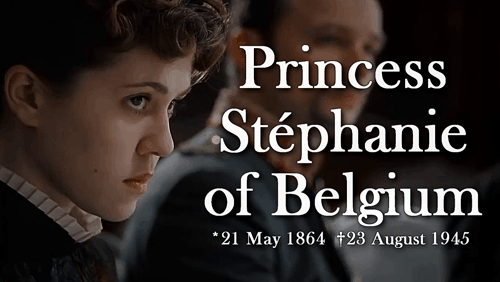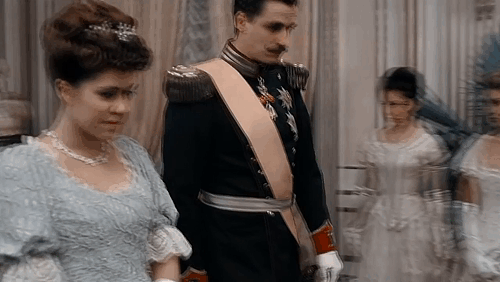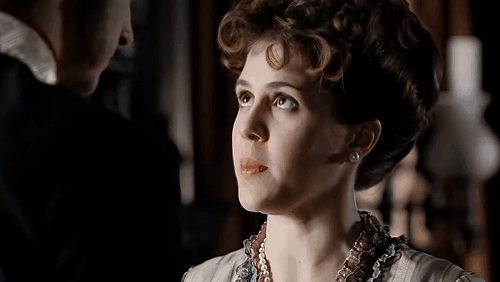germanaustriannoblesandroyals: Royal Women of Austria (12/?): Princess Stéphanie of Belgium S
germanaustriannoblesandroyals:Royal Women of Austria (12/?): Princess Stéphanie of Belgium Stéphanie was born as the third child and second daughter of King Leopold II. of Belgium and his wife Archduchess Marie Henriette of Austria. Stéphanie was part of the House of Coburg, a cadet branch of the House of Wettin, to which also the current Belgian and British royal family belong to, although the latter renamed themselves to Windsor during World War I because of anti-German sentiments. Stéphanie’s aunt Charlotte was The Empress of Mexico and had actually married Stéphanie’s future uncle-in-law, Archduke Maximilian of Austria.Stéphanie’s childhood was harsh. Her father was busy with state business and her mother showed no interest in her children. This is commonly believed to be caused by the loveless marriage Marie Henriette and Leopold had including Leopold’s constant cheating which even resulted into two bastard children. Henriette raised her children with inurement in mind and sometimes even castigated them herself.Stéphanie marriage to Crown Prince Rudolf of Austria was a marriage of convenience. It was clear the prince could only marry a catholic princess who should be no older then twenty. At the time the marriage market for those criteria was pretty empty and so Stéphanie was chosen. Rudolf and her could have not been more different. While he was a libertine, she was described as plain and uncharismatic.Stéphanie was 16 and Rudolf 22 when they married on May 10th, 1881, in Vienna. At the first Stéphanie actually liked her husband and they led a quiet life while traveling and then settling in Prague. But when she gave birth to what would be their only child Archduchess Elisabeth Marie (later known as “The Red Archduchess”), Rudolf was extremely disappointed. The birth of a male heir could have deescalated the constant clashes he had with his conservative father Franz Joseph I. Rudolf turned to his affairs again and contracted an STD which he also passed on to Stéphanie. The consequences were severe for Stéphanie, the illness left her unable to concieve again.If that was not enough, the couple also began to notice its differences. Stéphanie did not agree with Rudolf’s choice of friends while he thought her to be an old-fashioned conservative. Stéphanie’s life at Viennese court was also not eased by her mother-in-law Empress Elisabeth who referred to her as Trampeltier (clumsy oaf) because, in her opinion, she was not as delicate as the Empress herself. The court itself nicknamed Stéphanie die kühle Blonde (The Cold Blonde).In 1887, she traveled with her husband to Galicia and met the Polish Count Artur Polocki. They began a secret affair with him which led her to cancel her further travel plans to the Golden crown jubilee of Queen Victoria, a second cousin of hers. There were rumors of their affair but only Stéphanie’s sister Louise knew the Count’s identity and organized meetings for them. The Count and Stéphanie soon began to eachother as Hamlet and Ophelia of Shakepeare`s Hamlet. Stéphanie was widowed in January 30th, 1889, at the age of 25. Her husband had committed a murder-suicide with his young mistress Baroness Marie “Mary” of Vetsera. She continued her affair with Polocki, who was termally ill now, and died only a year later too.To escape the Viennese court and their mistrust and hatred of hers, she began travelling like her mother-in-law and was often accompanied by her sisters Louise and Clementine. Her father-in-law unsuccessfully tried to marry her to Franz Ferdinand, the now heir presumptive who would later be killed in Sarajevo, to stop him from marrying Sophie Chotek of Chotkowa.Stéphanie would remarry on March 22nd, 1900. Her chosen husband was the Hungarian Count Elemér of Nagy-Lónya and Vásáros-Namény, who would be raised to the status of Prince 17 years later. Stéphanie gave up all of her Austrian titles. Since this marriage was not befitting her rank, it led to the final break in Stéphanie’s relationship with her father. Her daughter remained at Viennese court and was raised by her grandparents. They would become estranged because her daughter blamed her partly in the tragedy of Mayerling. Stéphanie never regretted her second marriage and became close friends with Franz Ferdinand and his wife Sophie. When her mother died in 1902, she travelled to Brussels to say goodbye but her father chased her out of the chapel. The inheritance was only 50.000 Franc which many of those who were owed money by Stéphanie’s sister Louise could not believe. Leopold had become a very wealthy man by exploiting the Congo which originally had been his private property. Stéphanie went to court but ultimately lost the case.In 1935, she published her memoirs Ich sollte Kaiserin werden (I was to be Empress). It was translated into many languages and sold well. At least the German version, is accessible for free via the Gutenberg project.She died in August 1945, after surviving the entering of the Red Army into her home and being moved to a monastery in Pannonhalma. Stéphanie was not able to leave the bed anymore since she suffered from a severe heart disease. At the age of 81, she closed her eyes for a last time on August 23rd. Her husband Elemér survived her for less then a year. Both are still buried in the Crypt of Pannonhalma.// Daniela Golpashinas Crown Princess Stéphanie in The Crown Prince (2006) -- source link
Tumblr Blog : germanaustriannoblesandroyals.tumblr.com
#history#19th century#20th century









